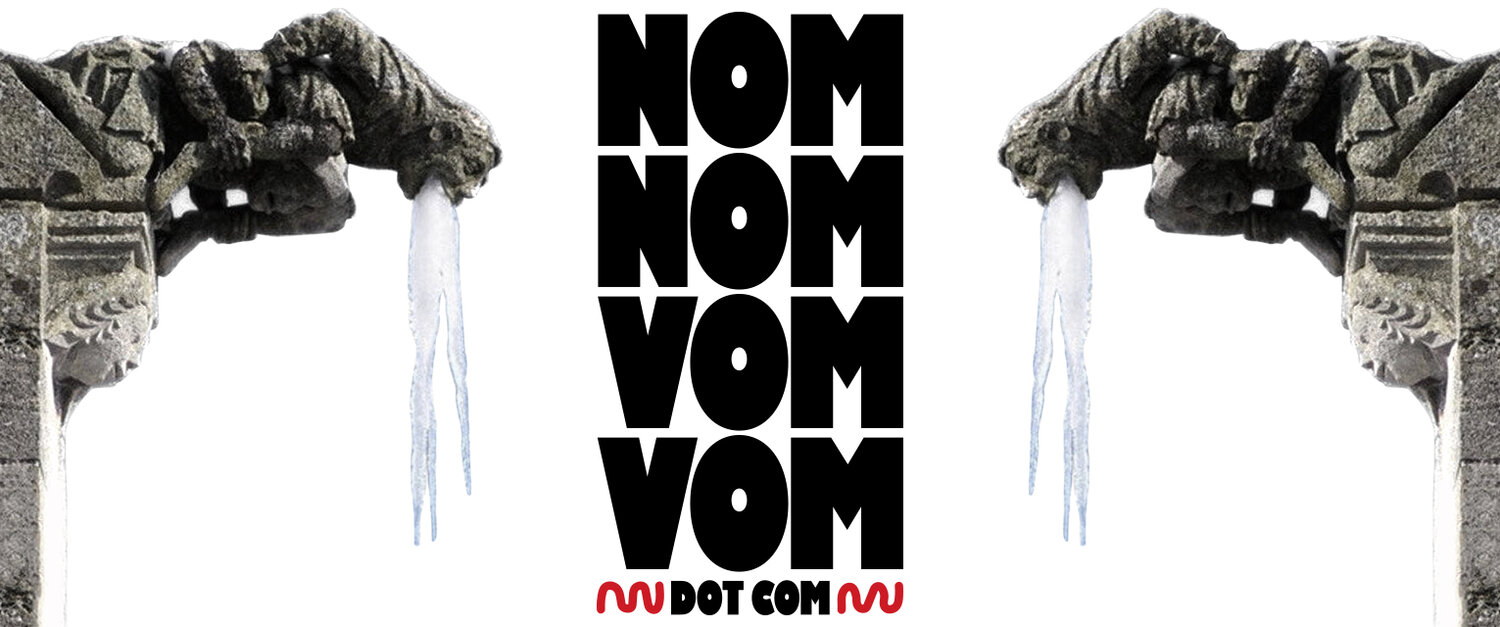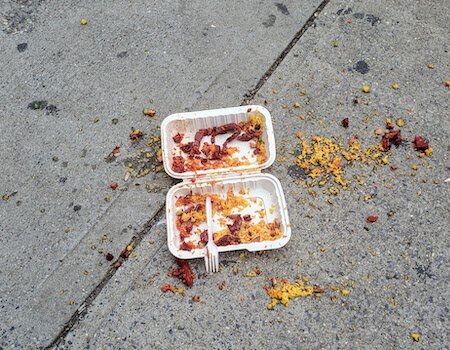On drinking from the carton
Is it okay to drink juice straight from the carton/bottle if I live alone? Everything is pasteurized, right?
Drinking juice straight outta the carton is a classic I-live-alone habit. Other examples include: Never Put Away Clean Dishes™, Always Be Naked™, Poopin’ With the Door Open™. My favorite one is eating tuna from the can with a fork. Meow.
Straight outta carton! Crazy motherfucka called Orange Juice…
There are two areas of hypothetical concern when it comes to drinking straight from the carton. One is viruses. Since you live alone and there’s no one else sipping from the same carton, this won’t be a problem (...because presumably you already have anything that your lips are transmitting via the carton.)
The second is bacteria. You mentioned pasteurization, which means your juice is starting off with a clean microbiological slate. In the course of sipping, bacteria will slosh from your lips into the juice, but refrigeration prevents this bacteria from growing to anything close to harmful levels. So: no worries there, either.
The only caveat I’d offer is that you should try to finish the carton within 10 days of opening it. This limits the timeline for any bacteria growth that could happen, I dunno, if you’re prone to keeping the juice out next to your gamer chair while you put in a 16-hour shift playing Fortnite. But given your direct form of consumption, I’m going to guess that you’re polishing off a carton every day or two.
+++++
On packing school lunches
Hi, busy mom here. I make my kids' lunches the night before but, after reading your blog, I'm super paranoid about making them sick. So, I stopped shoving hot pasta in tupperware then putting it in the fridge. But what else should I be aware of? Like, can PB&J soak through the bread and turn to mold or whatever overnight?
Hello, busy mom. Let me clarify my recommendation as it pertains to not slaughtering your kids.
When you portion out hot food for your kids’ lunch, let the Tupperware cool on the countertop. Leave the lid off during this pre-fridge session. There’s no exact requirement, but aim for long enough that the food has stopped visibly steaming (10 minutes?). Then add lid and put the food in the fridge. Doing this will allow the meal to cool way faster once it’s in the fridge. Properly cooled food = less bacteria growth.
Now, the PB&Js. Your children’s sandwiches might be a little soggier if you prep them the night before, but there’s no health risk. I like my PB&Js soggy. Let’s hope your kids do, too. If not, you will soon condition them to love soggy food. Win-win.
learning to love soggy PB & J
Last thing: should you be concerned that your child’s food goes unrefrigerated between leaving the house and lunch time? Nah. Think about how many generations of children have eaten lunch like this without dying. Including you, probably.
+++++
On cockroaches in restaurants
In pre-COVID days I was eating a salad at a diner on 14th Street in Manhattan. At the exact moment the waiter came to refill my water, a cockroach darted across the floor. We both saw it, but, in a kind of gentleman's agreement, decided not to speak of it. I finished my salad and left a 20% tip.
When COVID ends, can I go back to the diner? Or is the cockroach a "canary in the coal mine" situation? Would you go back?
First: I think you handled the whole situation diplomatically. Please pass my compliments along to your mom or whoever taught you manners. Second, who orders salad at a diner? Weird.
Anyway, a cockroach apologist might look at your question and say “Hey, it’s NYC, cockroaches are unavoidable. Man up.”
This is false. I live in a filthy downtown NYC tenement building. It’s a good day when there’s only one puddle of urine in the elevator. Last week I saw a guy using a hammer to de-shell a bucket of conches on the hallway floor. Most of my neighbors have mice and cockroaches. I have no vermin in my palatial 315-square-foot unit for two reasons:
Like a TV cop working a murder case, the first thing I did upon arrival was seal the perimeter. On moving day I scoured the place for crevices and holes, filling in a section between the wall and floor with caulking and sealing up a few gaps around pipes in the kitchen. If you have cockroaches (or mice) in your apartment, you should do this too.
I keep the space clean. Like, 1940s-housewife-on-Dexedrine clean. Even the darkest corners.
Pest control is purely a sanitation issue. If your space is free of food debris and standing water, there’s no reason for cockroaches to be there. In this way, your cockroach was a canary in the coal mine: it meant there was something in that diner that badly needed cleaning or sealing. Could have been something as mundane as a leaky dishwasher. More likely, it was an accumulation of kitchen filth that had gone unnoticed for decades— the oil-splattered backstop behind the grill, for example, or the grime-laden underside of a prep table.
Is it reasonable to judge a restaurant because they have cockroaches? Yeah, because —and I hope I’ve made this clear— cockroaches are 100% preventable. Cockroaches mean the restaurant is not doing a good job of cleaning their space.
Does this translate to unsafe food? Not necessarily, but it isn’t a fantastic sign. Should you go back to the diner? If it were me... that would depend on how good the food is.
+++++
On that old glass of water
Is it okay to drink a glass of water that has been sitting out for a few days? What if I’m not sure how long it’s been sitting out?
I relish when I find a forgotten pint of H20 in my apartment and gulp it down. Fresh tap water doesn’t taste like anything to me but once it has aged for a day, I’m convinced that it tastes better. What is that taste? Dust? Stillness? Paint chips?
My affinity for stagnant water would be a liability in the wild. Outside of the home, carelessly drinking fresh water is a fast track to vom vom. Put your lips to the wrong puddle and you could contract cholera or E. coli. Twice when I was a young child I became sickened with the parasite Giardia after drinking water from a river. The fact that it happened twice suggests that I was too young to grasp the concept of cause (guzzling suburban river water) and effect (explosive diarrhea).
Although untreated fresh water is generally a no-no for drinking, there are exceptions. Apparently the water in Lake Tahoe is totally safe to drink. (Upon learning this, I immediately indulged in a novelty water-drinking experience: I dove into the Lake, swam down ten feet, ingested an unknown volume of water and then surfaced. It tasted refreshing and I didn’t get sick.)
If you live in the US, it’s unlikely that your tap water contains any dangerous microbiological activity. Sure, there can be other bad things that show up in tap water (like lead), which have negative long-term effects. But it would take a really high concentration of chemicals to cause immediate foodborne illness from a single glass of water.
So, if you’re starting with a clean glass and safe tap water, then the question is this: what happens to a glass of water when it sits out?
Me sussing out a glass of water
Nothing. Bacteria— even if it somehow floats into your water glass— wouldn’t flourish there because there are no nutrients for it to consume. Old—or vintage, as I prefer to call it— water is perfectly safe. I would unhesitatingly drink water that had been left out for up to a week. After a week, I might worry about dust and airborne grime that could have found its way into the glass. Maybe use that one to water the plants.
+++++
On stained tableware
Should I be concerned about water stains on restaurant silverware and glasses? Is it soap or bacteria? Both?
Neither. Atop a standard restaurant dishwasher you’ll find three jugs of chemicals. They are
1. Soap
2. “Rinse aid”
3. Sanitizer
Stained tableware is your clue that jug #2 (rinse aid) is empty.
Soap and sanitizer are important for maintaining clean, safe, tableware. If there’s juice in both of these jugs then your flatware— even if it looks stained — is safe to wield over food.
So what are those streaky droplets and where do they come from? These are the harmless mineral traces that characterize what’s known as “hard water.” You probably know a guy who can mansplain “hard water” to you but I am not that guy. Anyway, “rinse aid” offsets the clouding and staining effects of trace minerals on tableware. You may have grown up with a squeeze bottle of the stuff under the kitchen sink if your mom was the type of classy chick who loves a sparkly wine glass for her afternoon Pink Zin.
The only “rinse aid” I need—am I right, ladies?
But rinse aid comes with a hefty price tag. A Dallas-based chemical salesmen once tried to sell me industrial rinse aid at the discounted subscription rate of $48/gallon. This has to be the greatest scam since printer ink. Our manufacturing facility didn’t directly serve customers, so why would we be concerned about water stains on our utensils? But we were funded with venture capital and I became increasingly worn down by the siren song of his chemical-slinging Texas drawl. In the end I may have bought a pallet or two. I’m only human.
Anyway, don’t be alarmed by clean tableware marked by water stains. It’s aesthetically disorienting (if you’re anal) but safe.
+++++






